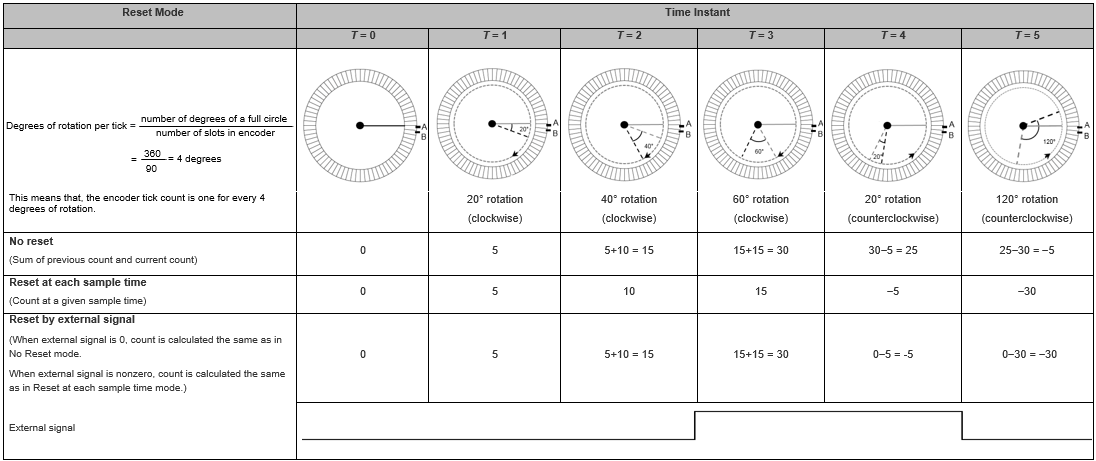Encoder
Measure incremental position and direction of a rotating motor
Add-On Required: This feature requires the Simulink Coder Support Package for Beaglebone Blue Hardware add-on.
Libraries:
Simulink Coder Support Package for BeagleBone Blue Hardware /
Sensors
Description
The Encoder block outputs the tick count from a quadrature encoder on a rotating motor that is connected to BeagleBone® Blue. Every increment in the tick count from the encoder indicates that the motor is rotating clockwise. Every decrement in the tick count from the encoder indicates that the motor is rotating counterclockwise. The tick count total represents the incremental position of the rotating motor.
Using the Reset mode parameter in the Block Parameters dialog box, you can reset the encoder readings that the block outputs. For more information on reset modes, see Reset mode in Parameters.
During simulations without hardware, this block outputs zeros. See Block Produces Zeros or Does Nothing in Simulation.
Ports
Input
Output
Parameters
Version History
Introduced in R2017b
